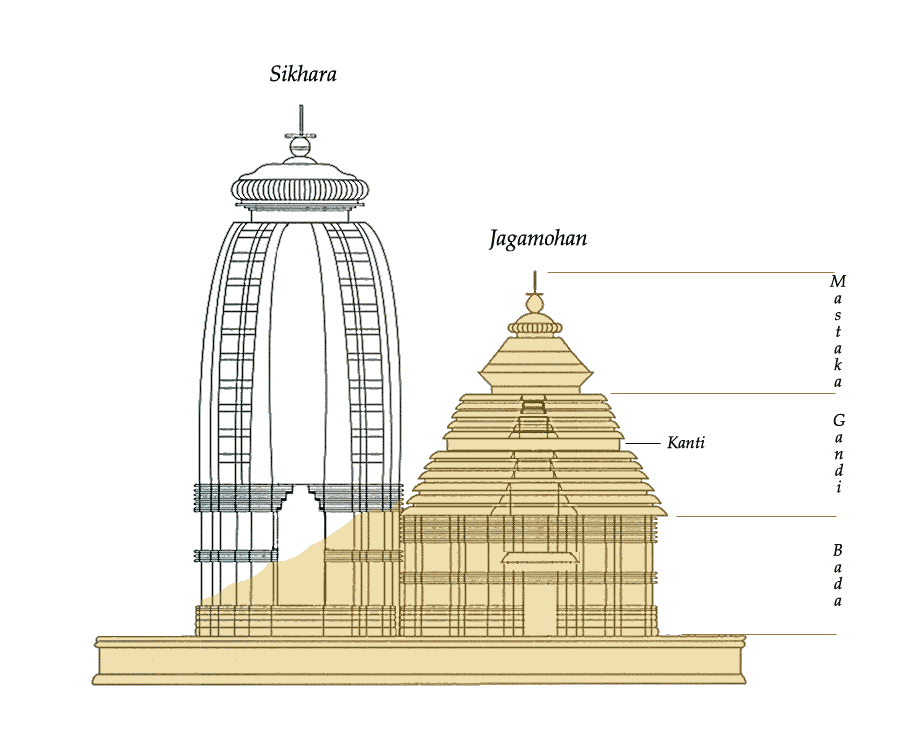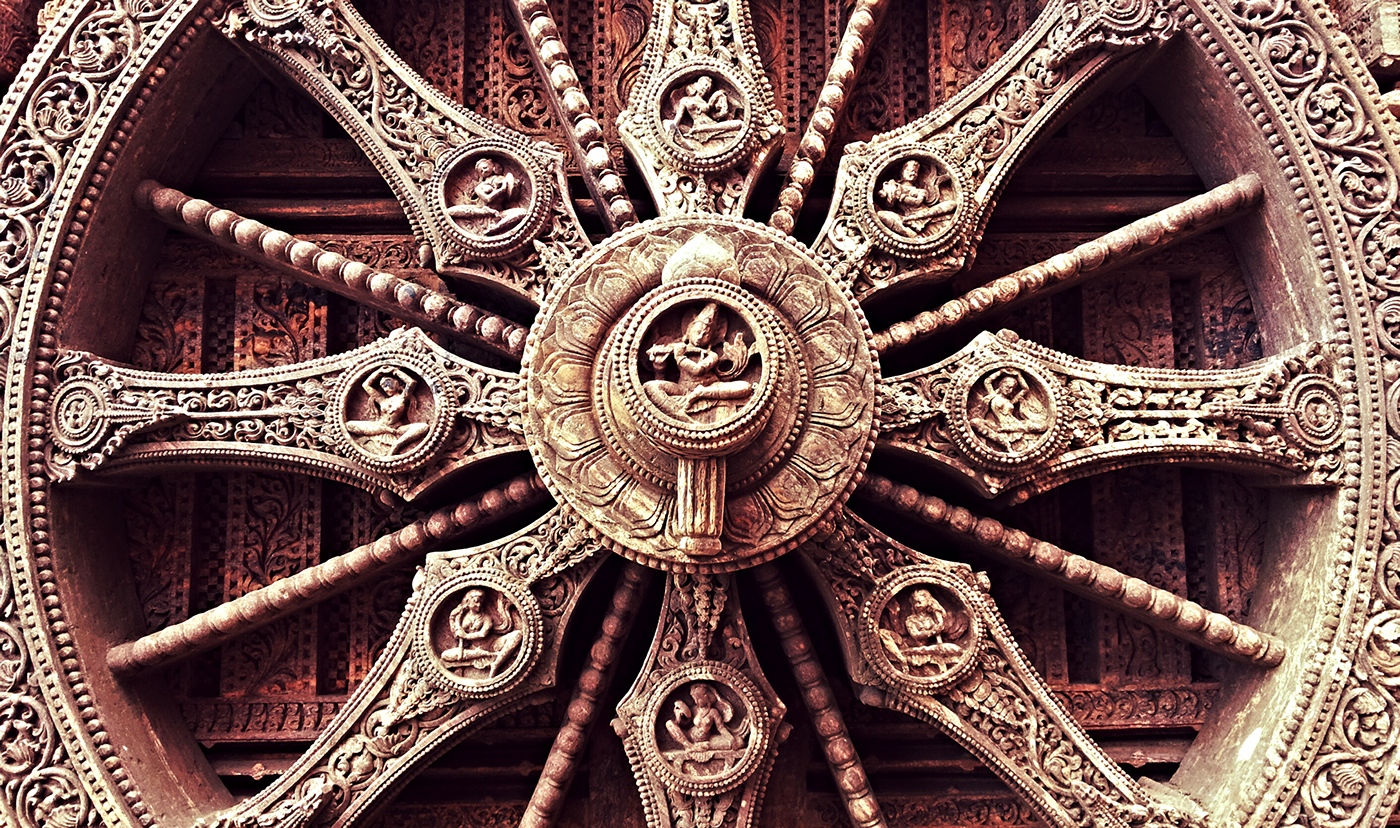The Savvy Bagpacker #2 : The Historical Beauty Of Konark
The Historical Beauty of Konark
So yes, continuing from my previous blog, The Savvy Bagpacker #1 : Namaskar Odisha !, the temple has been built in the form of a giant chariot with twelve pairs of carved stone wheels pulled by seven horses.The architecture comprises of the Kalingan and Dravidian Style. The temple entry is open in all the four directions however, the route to inside is from the east. This was kept particular in mind during its construction as it was said that the king wanted the first rays of the sun to strike at the Sun God kept inside the temple. It is carefully oriented towards the east so that the first rays of sunrise strikes the principal entrance at the idol of Sun God, that was believed to be kept suspending between strong magnetic beams initially. The temple is built from Khondalite rocks supplemented with iron beams."Konark sun temple is a 13th century Sun temple at Konark, Odisha, built by King Narasimhadeva I of Ganga Dynasty. It is in the shape of a chariot, built to worship the Sun God.” Thats probably the maximum information given in any history textbook. But the Guide there told us many stories and details of the sculptures that kept us in awe. Basically, Konark is made up of two Sanskrit words, KON meaning angle or corner and ARK means the sun. The temple was originally built at the mouth of the river Chandrabhaga and remained submerged under the waters of sea several years until the sea line receded years back. Since then, the Government has taken measures to save the structure.
The original temple had a main sanctorum, which was about 230 feet tall. However, this massive structure fell in the 19th century due to reasons still not known or sure of. The audience hall, which is the principal structure in the surviving ruins is about 130 feet. Among the structures, which have survived to the current day, are the dance hall, dining hall and the prayer hall.
 |
| Original temple and the surviving structure (yellow) Source: Wikipedia |
According to local folklore, the completion of the temple’s sanctorum is associated with the story of Dharmapada’s. King Narasimhadeva had assigned this work to Bisu Maharana who then employed 12000 artisans for 12 years. They were nearing the end of this construction, but found real trouble to mount the crown stone on top of the sanctorum as they feared the weight of the iron beams would bring the entire structure down.They later receive an order from the king to complete the work within 3 days lest face their death. This is when Bisu Maharana's twelve-year-old son, Dharmapada arrivesand offers them help to proposing the idea of using a strong magnetic rod in the dome at the top which would keep the iron-ore laden rocks all attracted and in place. Following this, Dharmapada decides to sacrifice his life for the 12000 artisans with the apprehension that the king would be angry at the artisans for not doing a job that a 12 year old could. However, it was later revealed to the artisans that the king had only threatened them with their life since he wanted it to be built soon. With the death of a human just after the temple was constructed, people no longer found it holy to be worshipped. This is one of the main reasons why there was never “a pooja” at the Konark Temple.
Another story that followed this was that of Samba’s, the son of Krishna, who was cursed with leprosy by Krishna himself because of the pride Samba had of his extreme beauty. Worried, Samba approached a sage who advised him to worship the Sun god to cure his disease. Samba underwent penance for 12 years in the forest of Mitra near the location of Konark Sun Temple where he ultimately gets cured of his ailment. In honour of the Sun God, he built an ashram near the temple, which still exists today and is known for its curatives.
The temple architecture completely reflects the life of man and the associated 3 stages- childhood, adulthood and old age.
Here, (at Konark) the language of stone surpasses the language of human.It is famous for the sculptures of maithunas. Each of the 12 wheels have sculpting of different associated events of life during that period. Events like trade with African countries, polygamy, court dances, apparels, wars can all be clearly understood from this masterpiece from history. The structure of the audience hall itself represents the 3 stages of life- beginning from the bottom, showcasing the events of childhood- the games played, the apparel worn; the middle and most part of the structure depicts the adulthood, with numerous erotic sculptures of maithunas, polygamy and also the daily routines of household. The uppermost part depicts events of old age- mostly in the position of tapas.
-Rabindranath Tagore
 |
| The sculptures of Maithunas |
 |
| Idol of the deity (placed later) |
 |
| Events of war and day-to-day life. |
 |
| The Entrance |
The wheels were also used as a sundial. Each wheel has 8 major and minor spokes. Each major spoke signified a count of 3 hours each and each minor spoke between 2 major spokes was 1.5 hours. Small circular beads found all around the wheel signified the minute. A pointer placed in the middle of the wheel would cast its shadow on the respective bead and the time was calculated accordingly. However, the only set back was that this sun dial was of no use in cloudy weather- an obvious !

Sundial showing the daily activities of the queen
The cause for collapse of this temple is still unknown. Writings until the 18th or possibly the 19th century still state the perfect condition of the temple. Local legend states that the collapse was caused by removal of the strong magnetized rod that was placed at the centre; by Portuguese shipmen which apparently interfered with the ships' compass leading to ship wrecks. Other records state events such as natural calamities leading to collapse attributing to its weak foundation. The ruins of the temple such as iron beams are placed around the temple’s garden. Other fallen sculptures are displayed at the Konark Archaeological museum.
 |
| A lithography plate from James Fergusson's 'Ancient Architecture in Hindoostan' (1847). It depicts part of the main tower still standing. Source: Wikipedia. |
Truly, the beauty of this place is remarkable.
We must go beyond textbooks, go out into the bypaths and untrodden depths of the wilderness and travel and explore our history, and tell the world, the glories of our journey into the past.Efforts are being made to protect the only standing structure of the Konark Temple. It now stands supported with numerous iron rods. Since worship at this temple never happened, it became a place of cultural heritage. The temple was granted World Heritage Site status by the UNESCO in 1984 and is also one of India’s 7 wonders !
-John Hope Franklin
A must visit site to explore India's beautiful ancient past which has amazing stories and secrets to share with its future !


Excellent
ReplyDelete